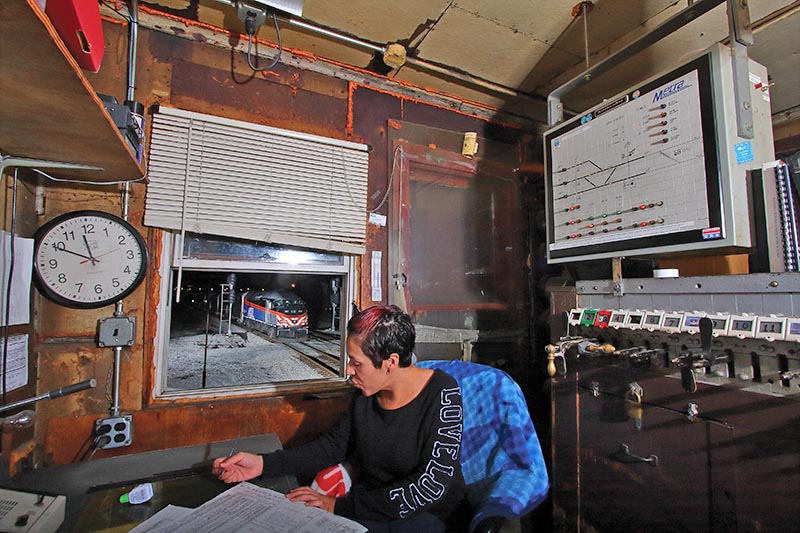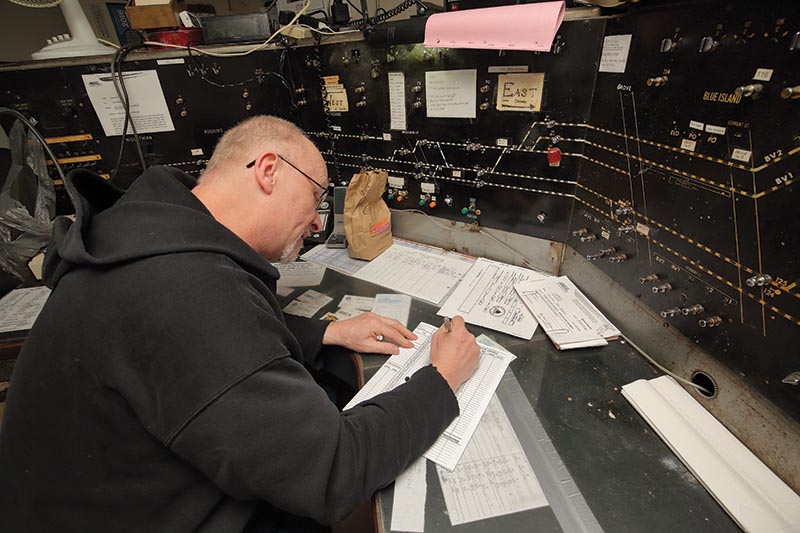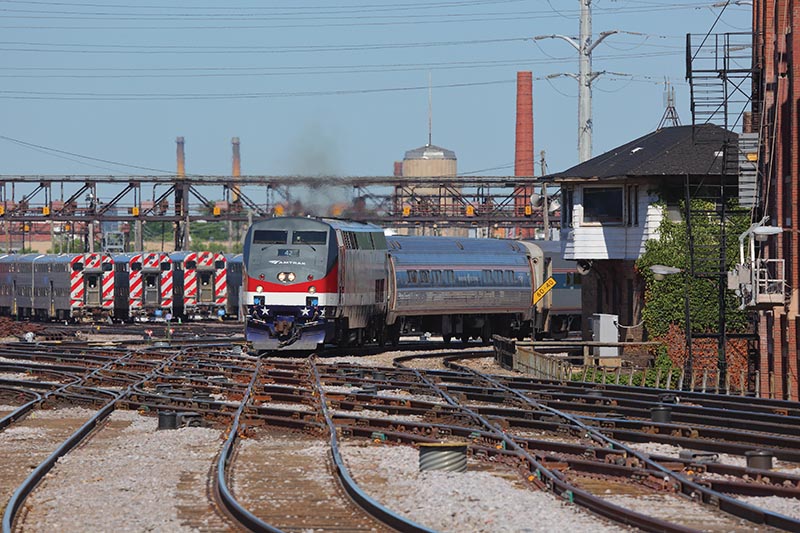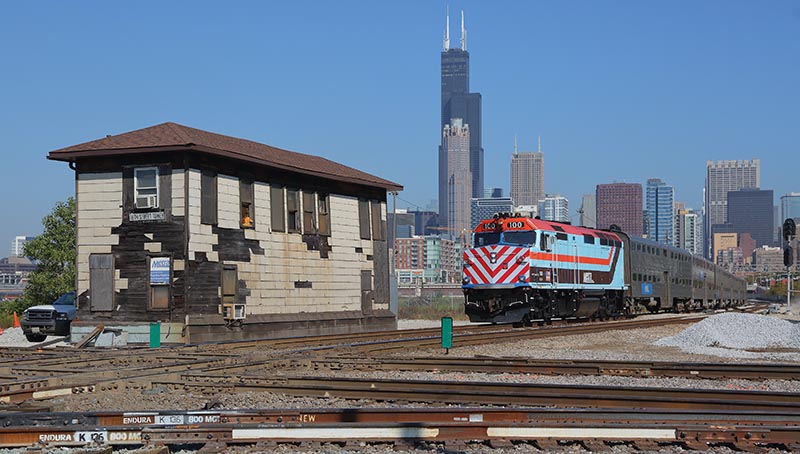 By Marshall W. Beecher/photos by the author except as noted
By Marshall W. Beecher/photos by the author except as noted
The Windy City. The City of Big Shoulders. Player of railroads and the nation’s freight handler, as Carl Sandburg described Chicago. Within its boundaries, the Chicagoland rail scene is a bustling web of intersecting lines that host both freight and passenger traffic by the several hundreds on a daily basis.
Among this vast network of intersecting lines around Chicago are the various routes of one of the largest commuter carriers — Metra, an arm of the Regional Transportation Authority. Comprised of fallen flag operations from storied roads like Burlington, Rock Island; Chicago & North Western; Gulf, Mobile & Ohio; The Milwaukee Road; Illinois Central; and Wabash; Metra is responsible for running a reliable and on-time network of lines that span six counties around the Chicagoland area.

ABOVE: Just shy of the midnight hour, 16th Street Relief Operator Madelyn Gonzalez jots down the passage of the last inbound Rock Island District train of the operating day. Various pieces of technology work side by side here, from early pistol-grip levers to more contemporary push-button hardware, as seen in the upper right of this November 2013 photo.
While many miles of these steel rails are operated and dispatched behind modern computer screens located in distant places like Omaha, Fort Worth, and Minneapolis, a few busy territories are still right here in Chicago. Some are even operated from an actual manned tower, having avoided the cut-over to a central dispatching center (unlike many others have over the years). These towers still operate in a 24/7/365 capacity, and remain vital links to Metra’s System Operations Management.
Three towers are still continuously staffed by Metra on two different districts. Metra’s Rock Island District wins the count, with two of the three area towers under its care. The third is under the direction of Metra’s Chicago Union Station District, which directs passenger moves primarily on former Milwaukee Road routes. Each is unique in its own way, and all still serve as a vital link in Metra’s suburban operations today.

ABOVE: Tim Valiquet gets his trainsheet completed on Third Trick (overnight). Other paperwork on the desk includes mark-up sheets for the normally nocturnal CSX moves that utilize Metra’s Rock Island District between Blue Island’s interchange to its home rails west of Joliet, Ill., some 25 miles distant.
16th Street Tower
Built in 1901, Metra’s 16th Street Tower stands at mile 1.1 on the Rock Island District, directly south of downtown Chicago and LaSalle Street Station. Here, the former Rock Island’s Joliet Subdivision has diamond crossings with the St. Charles Air Line and Canadian National’s Chicago/Freeport subdivisions, which change name designations here.
Once manned by New York Central in its heyday, which had two of its own mains running from LaSalle Street Station to Englewood, the tower was relinquished to Rock Island control when Penn Central moved the last of its former NYC passenger trains to Chicago Union Station in October 1968.

ABOVE: On June 21, 2016, Amtrak Train 332, Hiawatha Service from Milwaukee, covers the last couple of miles to Chicago Union Station, passing over Union Pacific’s Geneva Subdivision on movable-point diamond crossings. Red safety-striped cab cars on commuter sets inside UP’s California Avenue Yard are staged in the background during the usual midday layovers in the city.
The ramshackle wooden tower stands in stark contrast to the surrounding high rises and residences that have come about in gentrification of the near south side of the Loop. Inside, the 1901-vintage Taylor lever machine still lines some routes for the interlocking, where an average of 120 Metra moves and 10 Canadian National plus a number of Amtrak trains rattle the tower’s foundation in a 24-hour period.
Aside from Canadian National and Amtrak cross-traffic, 16th Street is responsible for the funneling of three main tracks from the Rock District’s LaSalle Street Station down to two mains on its Joliet Subdivision. Because the 47th Street Coach Yard is another couple miles to the south, all revenue and coach yard moves must pass the aging structure, with the operator working under the direction of Metra’s Rock Island Terminal Dispatcher located at Metra’s Consolidated Control Facility…


